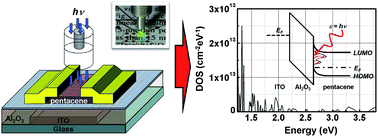Quantitative photon-probe evaluation of trap-containing channel/dielectric interface in organic field effect transistors†
Abstract
We report on photo-excited trap-charge-collection

- This article is part of the themed collection: Interface engineering of organic electronics

 Please wait while we load your content...
Please wait while we load your content...